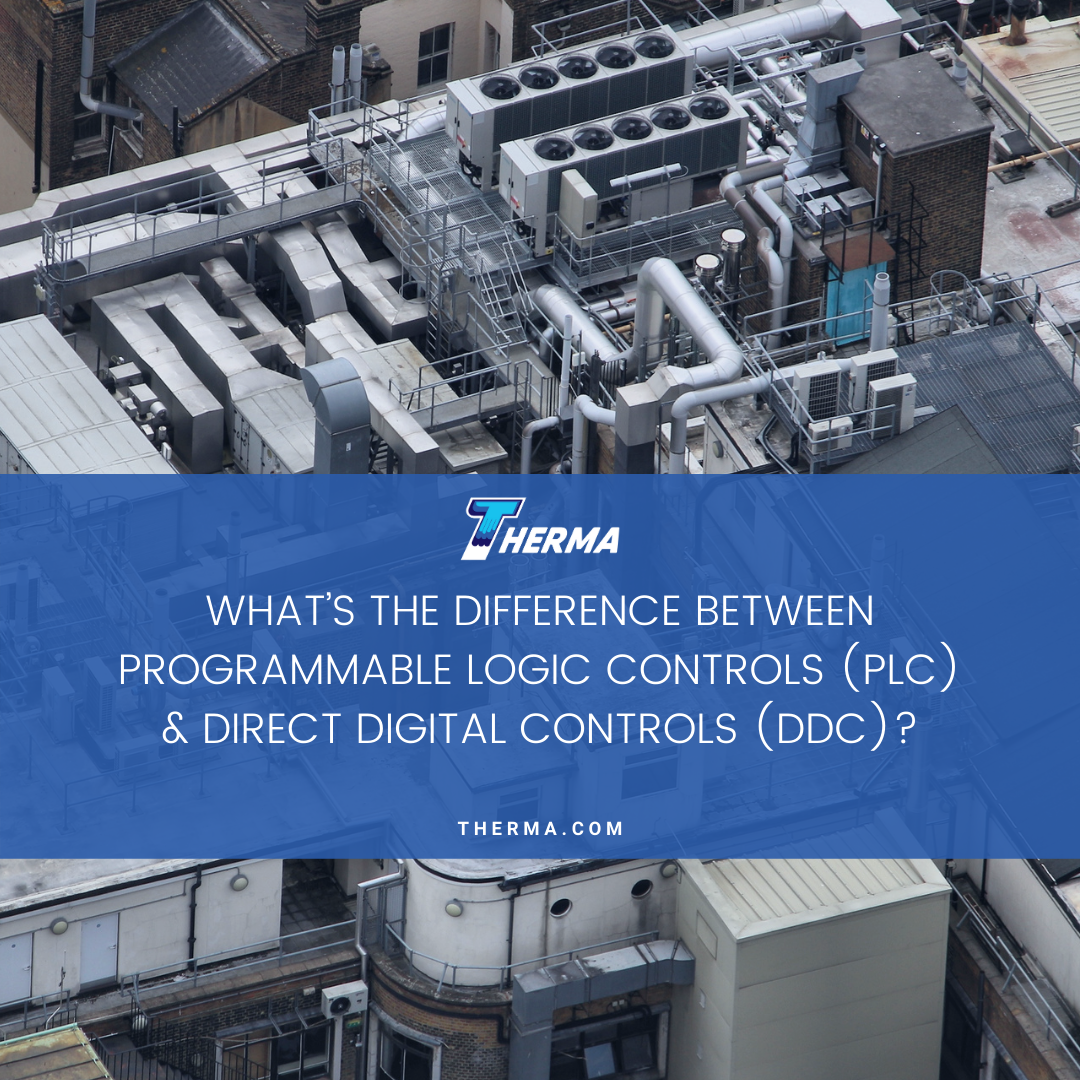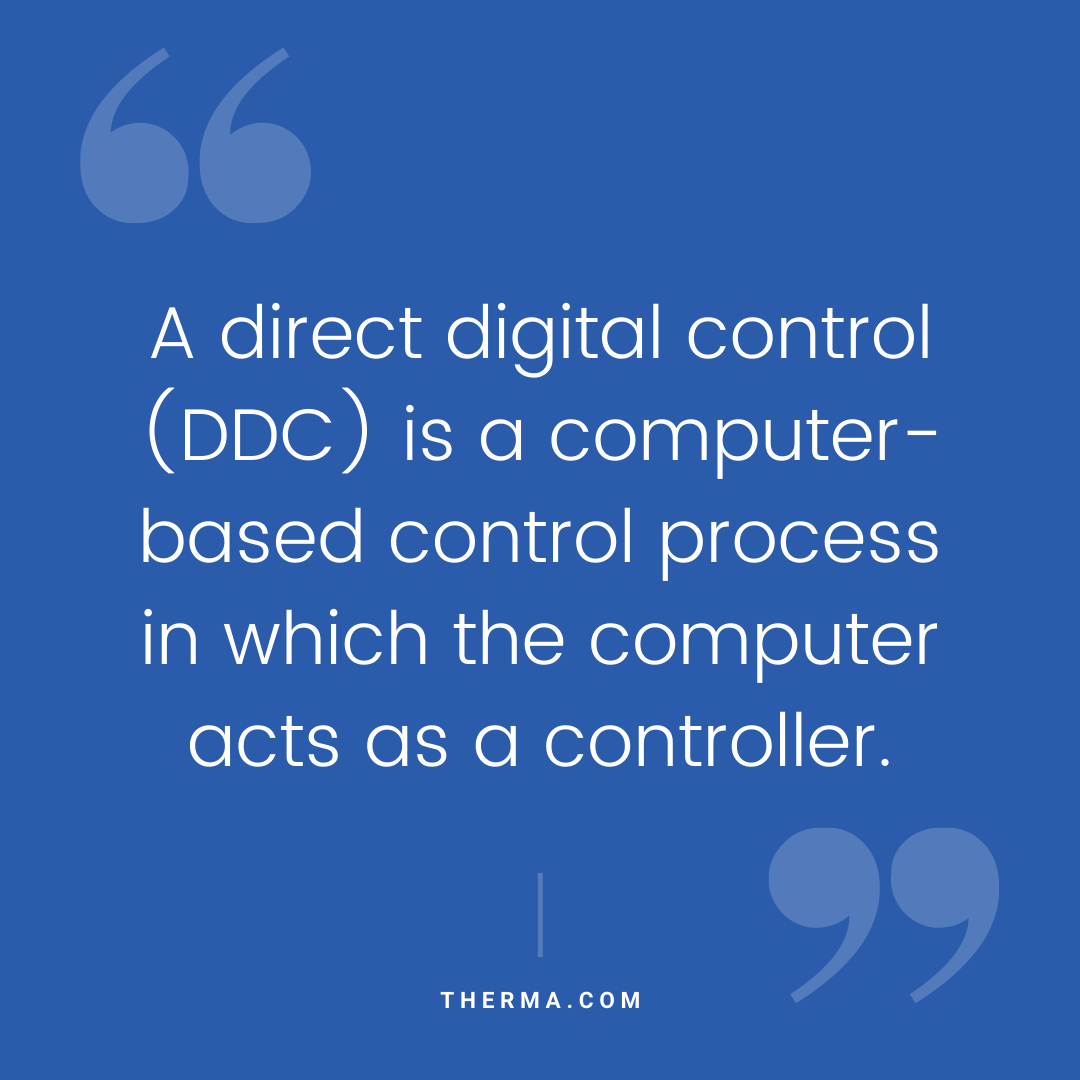Despite widely accepted use in most mission-critical facilities that demand high utility availability, medical building controls have traditionally failed to adopt programmable logic controllers (PLC) for output and action management of boilers, chillers, and other fuel systems. Instead, these highly-industrial systems affecting hundreds of patients continue to be designed using the same direct digital control (DDC) technology that dominates the non-mission-critical facility space, such as commercial office buildings and schools.
PLC and DDC controls both make sensor-data-based decisions to write outputs consequently. PLCs have the advantage over DDC controls, completing the activity with more accuracy, in less time, and offer increased dependability. PLCs also provide enhanced sophistication and the industrial hardening level essential for mission-critical environments; something DDCs are incapable of achieving.

What’s the difference between Programmable Logic Controls (PLC) and Direct Digital Controls (DDC)?
A programmable logic controller (PLC) is a ruggedized hardware device with a dedicated CPU and internal operations system used in industrial automation. A PLC can contain a simple CPU, a microcontroller, or multiple logic gates. PLCs can automate machine functions, specific processes, or entire production lines.
A direct digital control (DDC) is a computer-based control process in which the computer acts as a controller. The DDC continually monitors information and updates an internal database, continuously producing corrective output commands in response to changing control conditions. While DDCs are similar in function to traditional control systems, DDC output produces increased accuracy faster than their traditional counterparts. Building automation systems (BAS) use DDC to read and process sensor data and control actuators. DDC’s can be implemented on a PLC, a distributed network, or a standalone computer.
While PLCs and DDC systems have common functionality areas, each thrives in its area of specialization.
Programmable Logic Controller (PLC)
A PLC reads and processes sensor data, then uses it to trigger an output based on a pre-programmed framework. PLCs are considered a customizable control solution adaptable to just about any purpose.
PLCs are a part of the Industrial Internet of Things (IIoT) chain and are most often used in industrial buildings. They can use a web browser to communicate data. PLCs use SQL to connect to databases or MQTT to connect to the cloud. A standard messaging protocol, MQTT, is widely used in various industries such as manufacturing, oil and gas, and more because of its high-functionality and bandwidth efficiency.
Direct Digital Control (DDC)
DDC enables a single control point for a building’s various systems. DDCs are frequently used in HVAC, lighting, alarm systems, or automating an entire building’s system by controlling other electrical and mechanical.
DDC systems can improve building efficiency. Because DDCs are programmable, building operators can pre-program building functions such as the temperature to meet specific criteria, increasing efficiency while maintaining occupancy comfort.
DDC technology allows for remote facility control monitoring. Because DDC provides real-time data, facility managers can adjust HVAC settings, temperature, lighting, humidity, and more from any internet-connected location. Real-time equipment failure or service interruption alerts allow for quicker response and resolution of minor concerns before they become significant issues. Building supervisors no longer have to physically go to the site location to begin repairs.
Industrial vs. Commercial Use
PLCs are generally considered the better choice for high-performance situations because of their extended mean-time-between-failure (MTBF) over DDC systems. This makes PLCs are a popular option for environments requiring continual 24×7 performance, in addition to emergency power supply systems (EPSS).
DDC controls are typically used in commercial, i.e., non-mission-critical facilities, where their MTBF is generally accepted.
The associative costs of unscheduled downtime or risk to human life can lower PLCs total cost of ownership (TCO), further supporting their suitability for mission-critical facilities, such as hospitals.
Mission-critical environments, including critical care, data centers, and manufacturing facilities, rely on PLCs in conjunction with supervisory control and data acquisition (SCADA) systems because of their ruggedness.
Commercial environments, such as office buildings, malls, or other or non-critical settings, are well-suited for DDC systems, especially when it comes to HVAC, lighting, and monitoring and control of other non-mission-critical systems.
Integrations
While most DDC systems were designed with HVAC in mind, easily integrating with popular application programming interfaces (API), they don’t offer open-source resources.
Because DDCs resources are typically restricted to proprietary manufacturer APIs, there can be other struggles with complex or multi-party systems, e.g., fuel, emergency, or power systems. Users can also face higher prices and limited accessibility having to deal with one specific supplier.
PLCs are supported through the use of generally accepted industry programming tools. Several PLCs offer open-source code allowing users to customize control based on actual need, not manufacturing estimations of that need. Increased customization allows for additional usability and plays a vital role in increasing overall building efficiency.
If you’re interested in learning more about PLC and DDC systems and how your building can benefit, reach out to Therma’s HVAC engineering experts. We’re here to help.








